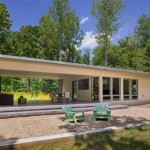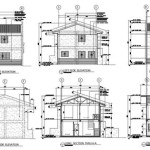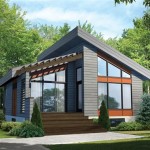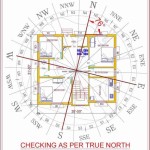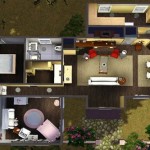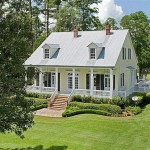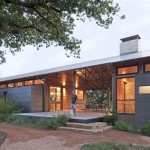Southern Living House Plans Designed for Senior Living
The design and construction of homes for seniors require specific considerations to ensure comfort, accessibility, and safety. Southern Living house plans, known for their classic aesthetics and functional layouts, can be adapted to meet the unique needs of older adults without sacrificing style or charm. This article explores key features and considerations when choosing Southern Living house plans for senior living, focusing on modifications that enhance accessibility and promote aging in place.
Aging in place refers to the ability to live in one's own home and community safely, independently, and comfortably, regardless of age, income, or ability level. Designing a home that facilitates aging in place involves incorporating features that address potential mobility limitations, visual impairments, and other age-related challenges. Modifying Southern Living house plans to accommodate these needs allows seniors to maintain their independence and quality of life within a familiar and comfortable environment.
Accessibility Considerations in Southern Living House Plans
Accessibility is a paramount concern when designing homes for seniors. Traditional Southern Living house plans often prioritize aesthetics and spaciousness, but modifications are essential to ensure ease of movement and navigation. Several key areas should be addressed to enhance accessibility throughout the home.
Entryways and Ramps: The primary entrance should be accessible to individuals with mobility limitations. This typically involves replacing steps with a ramp that adheres to ADA (Americans with Disabilities Act) guidelines. These guidelines specify a maximum slope of 1:12 (one inch of rise for every twelve inches of run). The ramp should also have handrails on both sides for added support. Consider covered entryways to protect against inclement weather. Even if a ramp isn't immediately necessary, a gently sloping walkway leading to the front door can improve access for visitors and future needs.
Doorways and Hallways: Standard doorways may be too narrow for wheelchairs or walkers. Widening doorways to at least 36 inches allows for comfortable passage. Hallways should also be widened to a minimum of 42 inches to accommodate mobility devices and provide ample maneuvering space. Pocket doors, which slide into the wall, can be an excellent alternative to swinging doors, as they eliminate the need for swing space and reduce the risk of collisions. Thresholds should be flush with the floor to prevent tripping hazards. Pay attention to the hardware; lever handles are easier to operate than doorknobs for individuals with limited dexterity.
Flooring: The choice of flooring is crucial for both safety and comfort. Hardwood floors, while aesthetically pleasing, can be slippery, especially when wet. Low-pile carpeting or non-slip flooring materials, such as cork or rubber, provide better traction. Avoid area rugs, which can create tripping hazards. Ensure that all flooring surfaces are level and free of transitions that could cause falls. Consider radiant floor heating for added comfort, particularly in colder climates.
Lighting: Adequate lighting is essential to prevent falls and enhance visibility. Incorporate a combination of natural and artificial lighting to illuminate all areas of the home. Install task lighting in areas such as the kitchen and bathroom to improve visibility during specific activities. Consider using motion-sensor lights in hallways and bathrooms to provide automatic illumination at night. Dimmers allow for adjustable lighting levels to suit individual preferences and needs. Pay attention to glare, which can be problematic for individuals with visual impairments. Use lampshades and diffusers to soften the light and reduce glare.
Smart Home Technology: Integrating smart home technology can significantly enhance safety and convenience. Smart lighting systems, voice-activated controls, and remote monitoring devices can provide added security and peace of mind. Smart thermostats can be programmed to maintain comfortable temperatures, and smart appliances can be controlled remotely. Emergency alert systems can be integrated into the home's infrastructure to provide quick access to help in case of a fall or other medical emergency. These technologies contribute to a more comfortable and secure living environment for seniors.
Bathroom Modifications for Senior Living
Bathrooms are often the most hazardous rooms in the house for seniors. Modifications are crucial to prevent falls and ensure safe and comfortable use of these spaces. The layout and fixtures should be carefully considered to accommodate potential mobility limitations.
Walk-In Showers: Traditional bathtubs can be difficult and dangerous for seniors to enter and exit. Walk-in showers with low or no thresholds eliminate the need to step over a barrier, reducing the risk of falls. Include a built-in seat or a fold-down bench to provide a place to rest during showering. Install grab bars in strategic locations, such as near the shower entrance and along the shower walls. Adjustable showerheads allow for customized water flow and direction. Non-slip flooring is essential in the shower and surrounding areas.
Toilets: Standard toilet heights may be too low for seniors to comfortably sit and stand. Install comfort-height toilets, which are several inches taller than standard toilets, to reduce strain on the knees and hips. Consider adding grab bars on either side of the toilet for added support. Bidets or bidet attachments can also enhance hygiene and independence.
Sinks and Vanities: Choose vanities with ample knee space underneath to accommodate wheelchair users. Install lever-handled faucets, which are easier to operate than traditional knobs. Consider installing a tilting mirror to allow individuals of different heights to see themselves comfortably. Ensure that countertops are at a comfortable height for both seated and standing users. Storage solutions, such as pull-out drawers and shelves, can make it easier to access toiletries and other essential items.
Emergency Call Systems: Integrate emergency call systems into the bathroom to provide quick access to help in case of a fall or other medical emergency. These systems can be either wired or wireless and should be easily accessible from the toilet, shower, and sink areas.
Kitchen Design Considerations for Aging in Place
The kitchen is another area that requires careful consideration when designing homes for seniors. Modifications should focus on improving accessibility, safety, and convenience.
Countertops and Work Surfaces: Varying countertop heights can accommodate both seated and standing users. Lower countertops provide a comfortable work surface for individuals in wheelchairs or those who prefer to sit while preparing food. Adjustable-height countertops offer the most flexibility. Ensure that there is ample knee space under the countertops. Consider using pull-out shelves and drawers to make it easier to access items stored in cabinets.
Appliances: Choose appliances with easy-to-use controls and clear displays. Front-loading washing machines and dryers are easier to access than top-loading models. Consider installing a side-by-side refrigerator to minimize bending and reaching. Microwave ovens should be placed at a comfortable height to avoid reaching or bending. Induction cooktops are safer than traditional gas or electric cooktops, as they do not get hot to the touch.
Storage Solutions: Maximize storage space with pull-out shelves, lazy Susans, and other organizational aids. Upper cabinets should be easily accessible. Consider using adjustable shelves to customize storage space. Pantry organizers can help to keep food items within easy reach. Ensure that frequently used items are stored in easily accessible locations.
Lighting: Adequate lighting is essential for safe food preparation. Install task lighting under cabinets to illuminate countertops. Ensure that the kitchen is well-lit with a combination of natural and artificial light. Consider using motion-sensor lights in the pantry and other storage areas.
Flooring: Non-slip flooring is essential in the kitchen to prevent falls. Choose a flooring material that is comfortable to stand on for extended periods. Avoid area rugs, which can create tripping hazards. Ensure that the flooring is easy to clean and maintain.
By incorporating these accessibility features and modifications into Southern Living house plans, seniors can enjoy a comfortable, safe, and independent living environment. The goal is to create homes that support aging in place, allowing individuals to remain in their own homes and communities for as long as possible.

Beautiful House Plans For Southern Living The Designers
:max_bytes(150000):strip_icc()/SL-1936_HallsleyStreetofHope_Front-ce62e6532d0347f7868ef04b5edb634d.jpg?strip=all)
We Ve Gathered Our Favorite Floor Plans With A Home Office Whether You Re Looking For 3 Bedroom House An 4 Or More
:max_bytes(150000):strip_icc()/SL-1648_FCP-1f759bde89704b1e8118c86e551cc3c0.jpeg?strip=all)
This Is The Perfect Size For A Retirement Home

Stylish House Plans With A Convenient Home Office
:max_bytes(150000):strip_icc()/1375tideland_4c_ext-364758e42ee5467a8500d2be5ec8ba25.jpg?strip=all)
Top 14 Best Ing House Plans
Dream House Plans You Re Going To Flip For
These All Time Best Southern Living House Plans Are Certified Dream Homes

Our Favorite House Plans Of 2024 Southern Living Farmhouse

Southern Living House Plans With Photos Dfd Blog

My Dream Home Here S What It Looks Like Laurel

